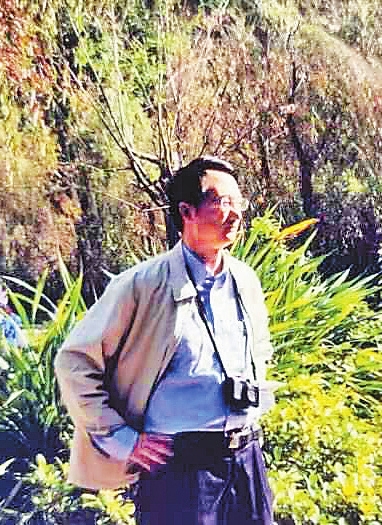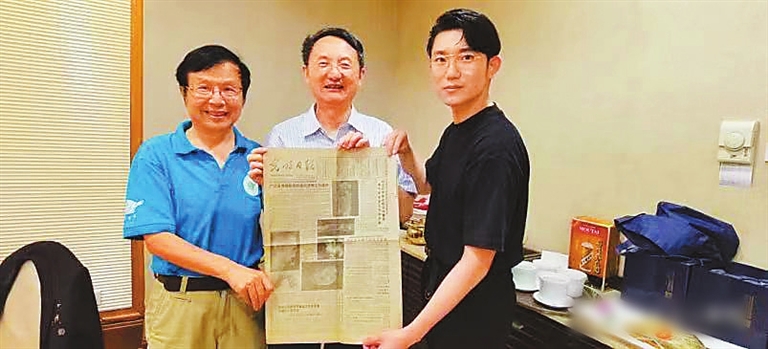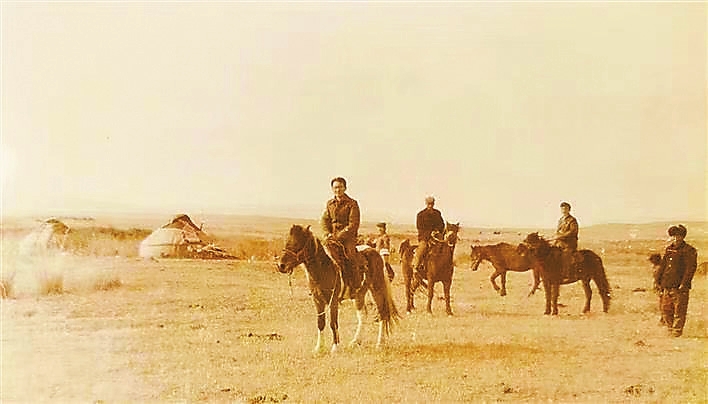


EARLIER this year, new discoveries at the Sanxingdui Ruins site in Sichuan Province attracted much attention on the Internet. However, back in 1986 when thousands of artifacts were unearthed at the site, people knew very little about it. So how did the public first gain an insight into the Sanxingdui Ruins? Here is a story behind the first in-depth report on the site. On Dec. 10, 1986, Guangming Daily published a report titled “Indoor work starts to clean bronze statues unearthed at Guanghan County” on its front page. This report caused a sensation across China and even the world. The report was written by Bai Jiangang, a staff writer of the Daily. With a bold guess and careful verifications, it conjured amazing images of ancient Sichuan civilization to the readers. Bai graduated from Northwest University in Xi’an, Shaanxi Province, with a bachelor’s degree in archaeology and a master’s degree in the history of Qin (221-206 B.C.) and Han (206 B.C.-A.D. 25) dynasties. He was first assigned to the PLA Academy of Military Science after graduation, but an unexpected opportunity brought him to the Daily to cover archaeological stories. “Back then, the media outlets valued archaeological reports very much. Such reports, written with highly professional knowledge, were not only intended for Chinese readers, but also for foreign readers,” said Bai. “It wasn’t long after China started its reform and opening up that attracted much attention from the world. But at the same time, equal attention was paid to China’s archaeological research as well,” Bai added. With his educational background in archaeology and history and an earnest attitude towards work, Bai had been known for his archaeological reporting by the time he started his research on Sanxingdui. In July 1986, thousands of cultural relics were unearthed at the Sanxingdui Ruins. As the artifacts were distinct from what is known about ancient Chinese civilization, even experts could not tell the origin of the Sanxingdui Civilization. Due to a lack of academic studies, the story was covered by many media outlets only in a news brief. Eager to find out more about the site’s mysteries, Bai decided to delve into the discoveries and unveil the stories behind them. He arrived in Chengdu in November, stayed in a hotel next to Sichuan Museum and started his month-long exploration into the secrets of the Sanxingdui Ruins. Every day amid the damp and cold Sichuan winter, Bai shuttled between libraries, museums and Sichuan University for research and interviews despite eczema that had tortured his skin. He dug through all related materials, probed into the cultural relics at Sichuan Museum and Guanghan County and interviewed every expert and scholar he could ever find. Bai wanted to study the ruins with respect to world civilization, so he examined other cultural relics similar in age as the Sanxingdui Civilization. He had interviews with experts on world history and ancient Sichuan history. He looked through ancient Chinese classics such as “Classics of Mountains and Seas” and “Records of the Grand Historian.” To avoid any possible errors, Bai was particularly careful about what he wrote. He painstakingly checked every word and sentence to ensure everything was backed with solid evidence. After he finished the final draft, he visited archaeological expert Professor Tong Enzheng for a final review. “I feel relieved after Professor Tong confirmed everything in the article,” said Bai. However, the article was almost stolen on his way back home. After visiting Professor Tong, Bai put the final draft in his bag and put the bag on the back of his bike. A thief approached him and snatched his bag. “I felt like it was the end of the world. There was no money in the bag, but my article and all related materials were in it. If I couldn’t find it back, I’ll need to rewrite the reports, and there was no way I could reproduce exactly the same thing,” said Bai. Bai reported the theft to a nearby police station immediately and luckily, it took less than an hour for the police to retrieve the bag. Shortly after the report was published, five more stories written by Bai were released. He was the first to compare Sanxingdui Civilization to the Western bronze civilizations in the news. For Bai, it is a journalist’s responsibility and value to bridge the gap between the public and the academic world and between the East and the West. (Lin Lin) | 
